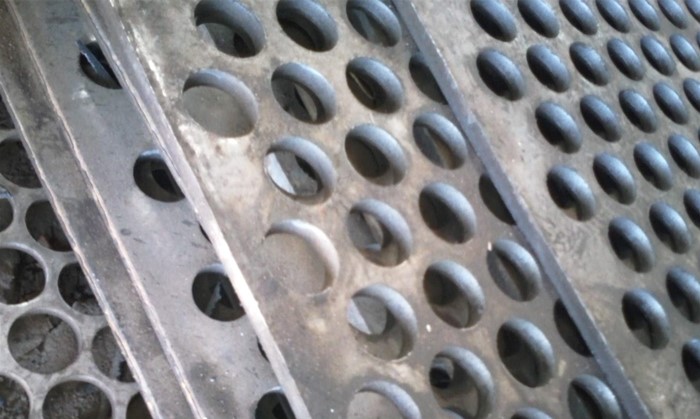Thickness Range of Perforated Plates: Materials & Specifications
Source:www.cn-psp.cnAuthor:河北森驰公司 Last updated:2025-05-06 09:03:07 Browse:
A perforated plate is a metal sheet featuring uniformly distributed holes created through a stamping process. It finds wide application in architectural decoration, filtration and screening, ventilation partitions, and more. By selecting different base materials and thicknesses, one can achieve the desired hole pattern, strength, and aesthetic effect.
Classification by Processing Form
Perforated plates are produced in two main forms based on their manufacturing process:
Coil plates are perforated directly from metal coils. Their thickness typically ranges from 0.3 mm to 1 mm. Common materials include hot‑dip galvanized steel, cold‑rolled steel, and aluminum. The coil form enables large‑volume, continuous production, making it ideal for long, uninterrupted lengths of perforated sheet.
Sheet Perforated Plate
Sheet plates are first cut to size and then perforated. This method accommodates a wider thickness range—from 0.3 mm up to 20 mm—and accepts various materials such as cold‑rolled steel, hot‑rolled steel, galvanized steel, manganese steel, aluminum, and stainless steel.
Thickness Range by Material
Different base materials have recommended thickness ranges for sheet perforated plates:
Recommended thickness: 0.4 mm–3 mm
Features excellent flatness and high precision, well suited for fine filters and decorative panels.
Recommended thickness: 2 mm–20 mm
Offers greater strength though with slightly less surface smoothness, making it ideal for load‑bearing or structural applications.

Recommended thickness: 0.4 mm–20 mm
Coated with a protective zinc layer, it provides superior corrosion resistance for outdoor or humid environments.
Recommended thickness: 3 mm–20 mm
Known for its impact and wear resistance, commonly used in heavy‑duty, high‑impact industrial settings.
Recommended thickness: 0.4 mm–20 mm
Lightweight and corrosion‑resistant, aluminum plates are popular for curtain walls, ceilings, and acoustic panels.
Recommended thickness: 0.4 mm–20 mm
Offers high temperature tolerance, corrosion resistance, and easy cleaning, making it suitable for food processing, protective barriers, and pharmaceutical equipment.
In summary, coil perforated plates (0.3 mm–1 mm) and sheet perforated plates (0.3 mm–20 mm) cover a broad spectrum of thicknesses and materials. Depending on application requirements—such as strength, corrosion resistance, or decorative appeal—choose the appropriate combination of material (cold‑rolled steel, hot‑rolled steel, galvanized, manganese steel, aluminum, stainless steel) and thickness (0.3 mm to 20 mm) to achieve optimal performance and aesthetics.
